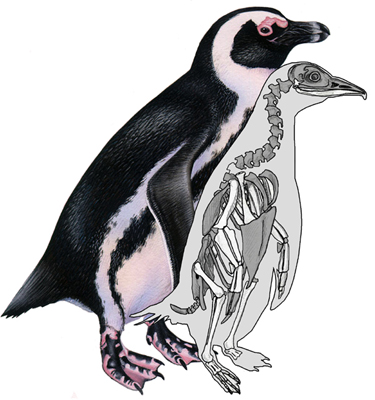Into Africa, Via the Penguin Conveyor Belt

Dr. Dan Ksepka is an expert on prehistoric penguins. In his latest research, he delves into the origins of several species of now-extinct African penguin to find out whether they all evolved from one common ancestor or whether they were distinct species that arrived at separate times.
His conclusion, based upon fossil evidence, is that the penguins aren’t evolutionarily related; instead, an ocean current known as the South Atlantic Gyre most likely served as a “penguin conveyor belt,” allowing several distinct species to travel from South America to South Africa, including the Blackfooted Penguins who are now the only penguin inhabitants in the area.
Read more at Ksepka’s blog:
A Penguin Conveyor Belt in the South Atlantic
Meet Inguza, the Smallest Penguin from Africa
- Categories:


